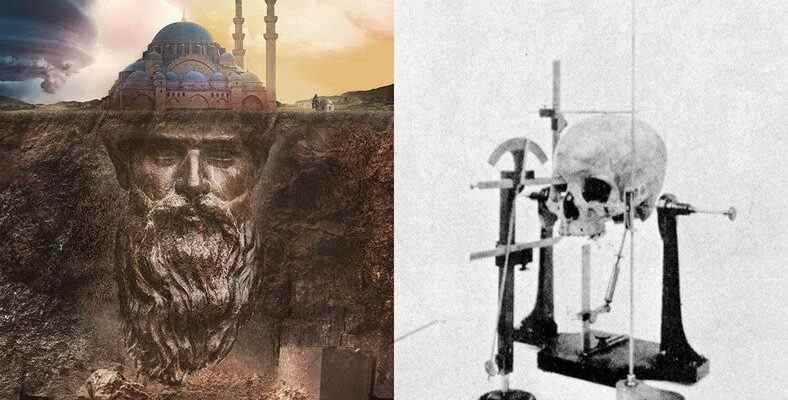The skull of Mimar Sinan, one of the greatest geniuses in history, has been missing for 87 years. Such an important value lies headless in his grave.
Sinan’s head was exhumed from his tomb in 1935 due to the Turkishness debates in the 1930s. The purpose was claimed to be scientific, but The original purpose was different.
The removed skull was not put back in place and not found for many years. So what exactly was this original purpose?
It was said, “This genius is only a Turk,” and it was checked whether the skull shape met the “brachycephalic” criterion. What is this brachycephalic?
– The skull in the image does not belong to Mimar Sinan (a photo from 1902).
This method of measuring skull bones was developed by anthropologists in the early 20th century. to categorize human populations used.
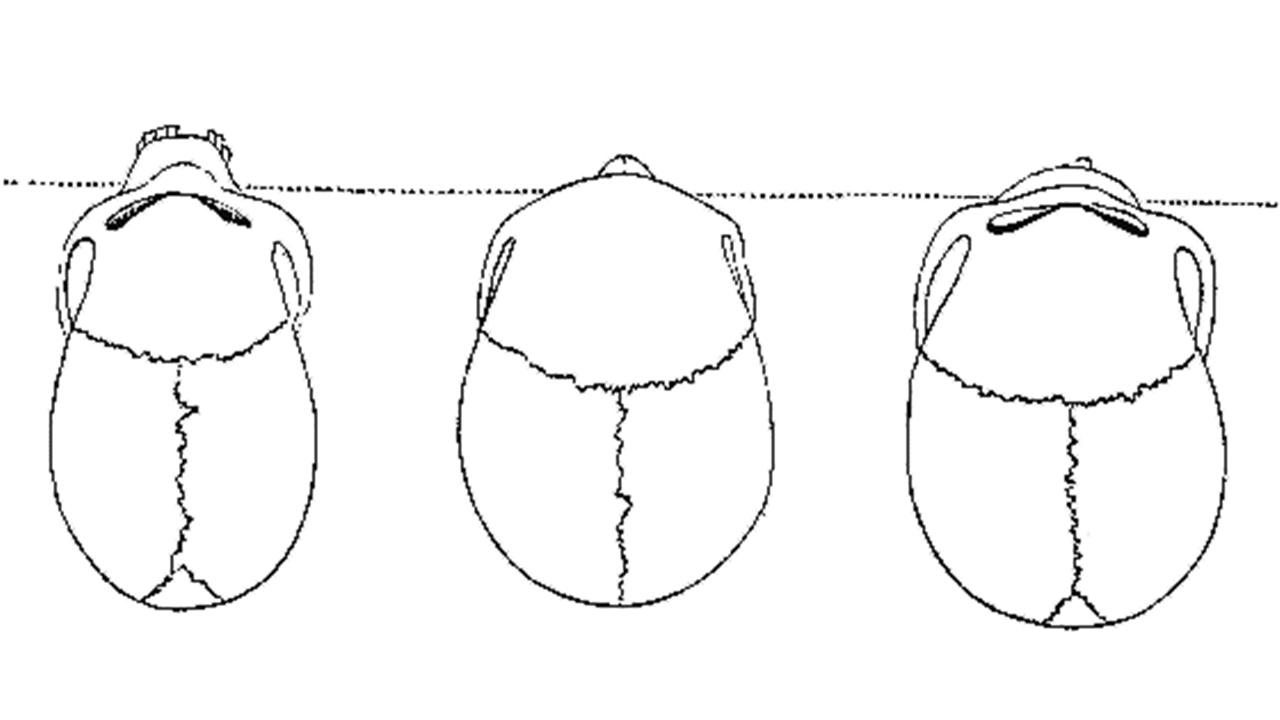
– Image: Samuel George Morton’s drawing dated 1839 “A black skull, a Caucasian (white race) skull, a Mongolian (Turani) skull”
According to the method in question, long and flat skulls when viewed from above dolichocephaly is called. This skull variant is seen in Aboriginal Australians and South African natives. Skulls that are more oval mesocephalus It’s called a genus and is found in Europeans and Chinese.
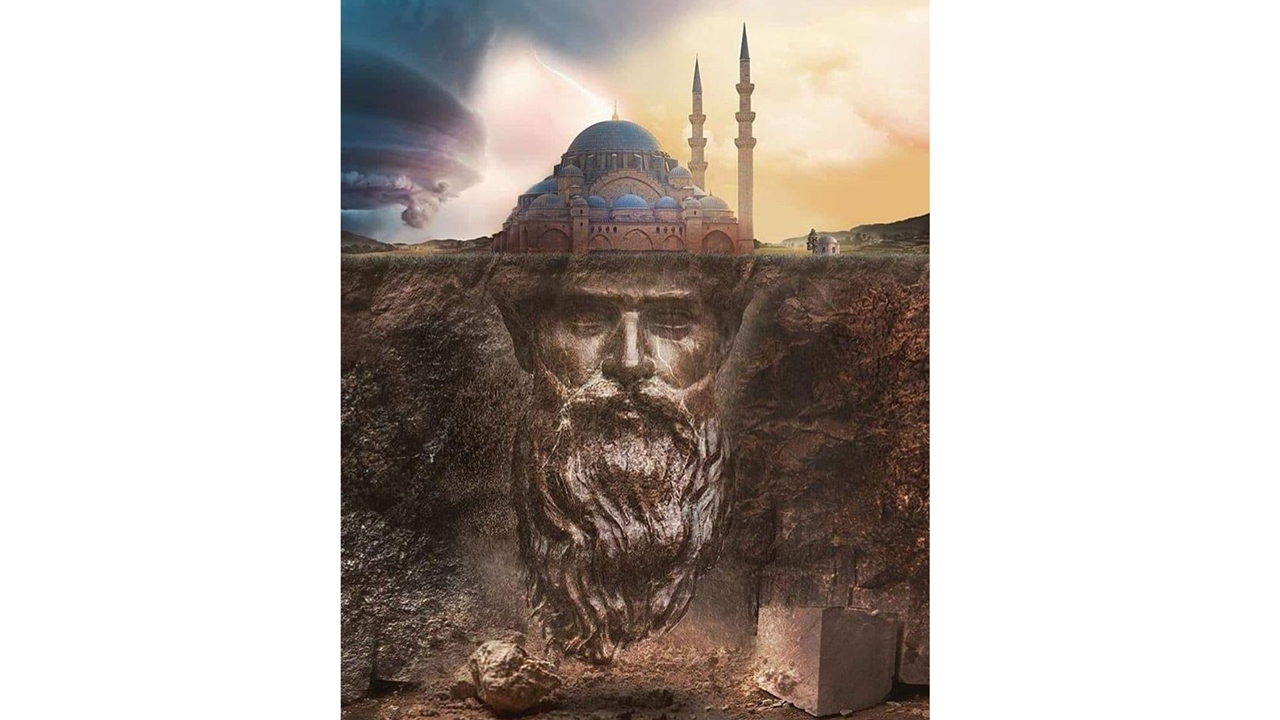
Broad and short skulls is brachycephalic; this category includes Turks, Mongols and natives of the Andaman and Nicobar islands (the archipelago in the Bay of Bengal and the state of the Indian Union).
Using this method, it was aimed to see whether Mimar Sinan was Turkish or not, but a classification based on the skull index does not form the basis for the determination of human races. Since the peoples of the world have developed by mixing with each other throughout history, the effort of racial classification to be tied to objective criteria. it is not scientific.
There were claims that this genius was Greek or Armenian.
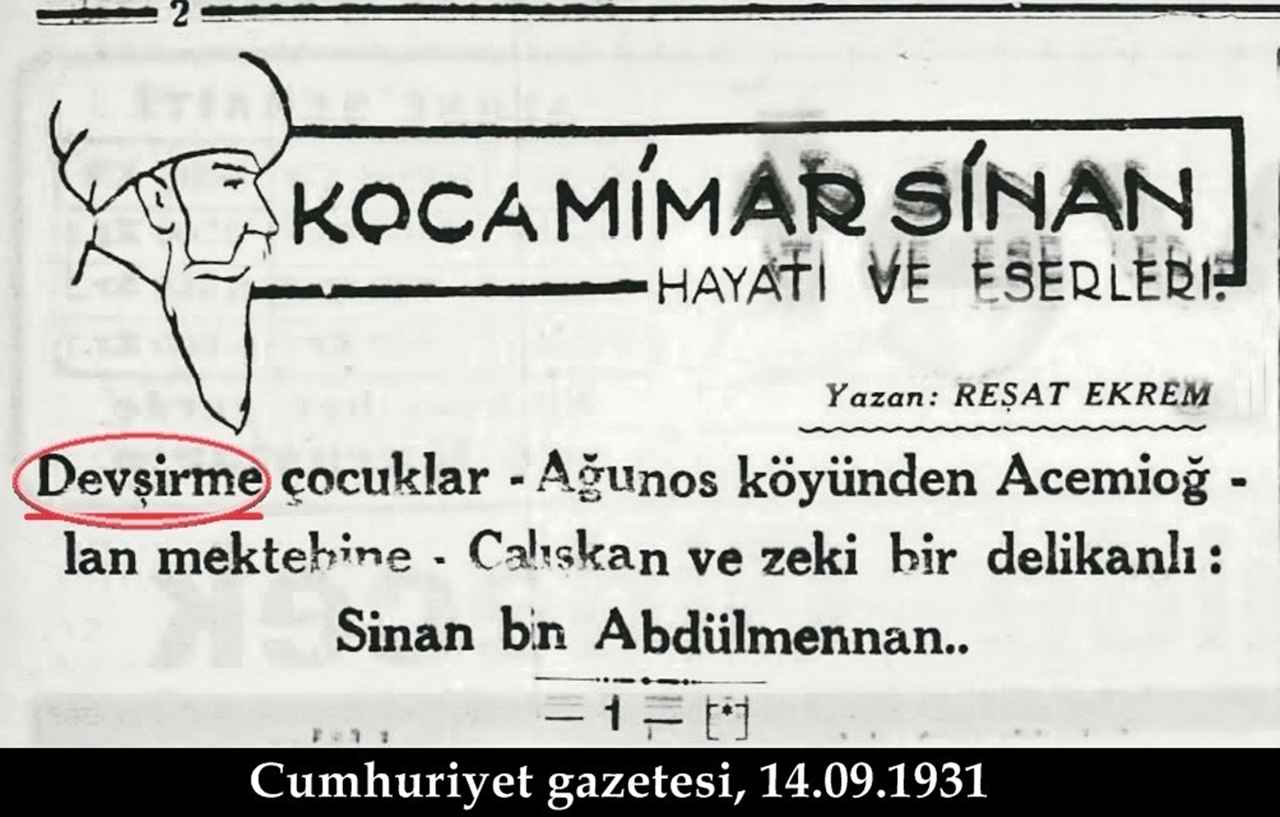
Indeed, Sinan was a devshirme. There was a high probability that he was not Turkish. He was born as Armenian, Greek or Christian Turkish in Agrianos (today Ağırnas) village of Kayseri. It is also thought that he may belong to the shamanic Turkish community living in Cappadocia, known as “Gebran”. He came to Istanbul as a devshirme during the reign of Yavuz Sultan Selim and was taken to the Janissary Corps.
Brachycephalic is a Turkish condition in the years it was thought, Graves in some cities were excavated and 1040 skulls were taken to Ankara (Some historians claim tens of thousands). Turkish Historical Society President Hasan Cemil Çambel, TTK Vice President Afet İnan and TTK member Şevket Aziz Kansu took Sinan’s skull, which was excavated from his grave in Süleymaniye, to anthropologists for measurement.
So was Mimar Sinan really Turkish, or was he Armenian or Greek?
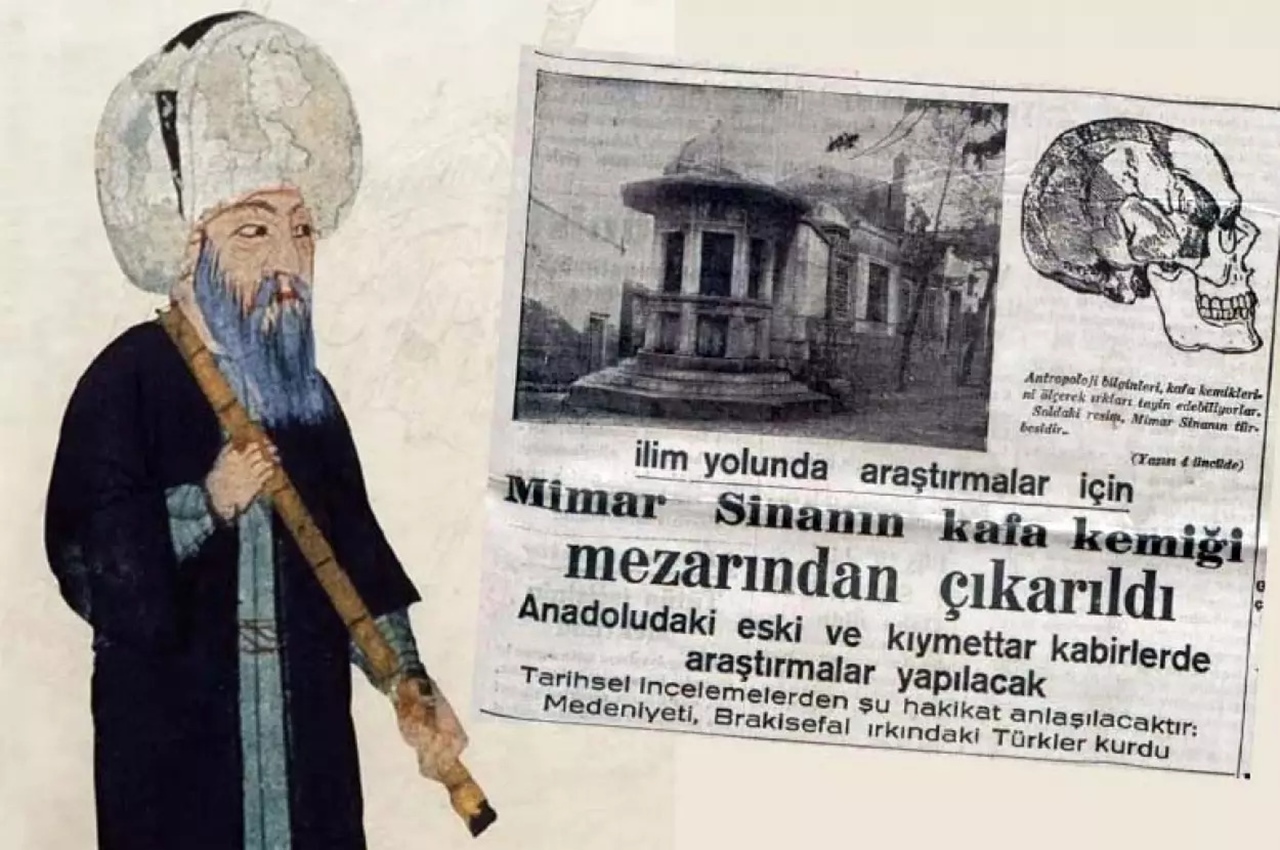
Actually, it didn’t matter; Being Turkish, Armenian or Greek would neither increase nor decrease its value. however, his tomb was opened. After the measurement, the newspapers were informed and it was claimed that Mimar Sinan was “Turkish”. In most of the statements in the newspapers, extreme nationalist expressions were used.
This was the purpose of removing the skull. Then why did he disappear?
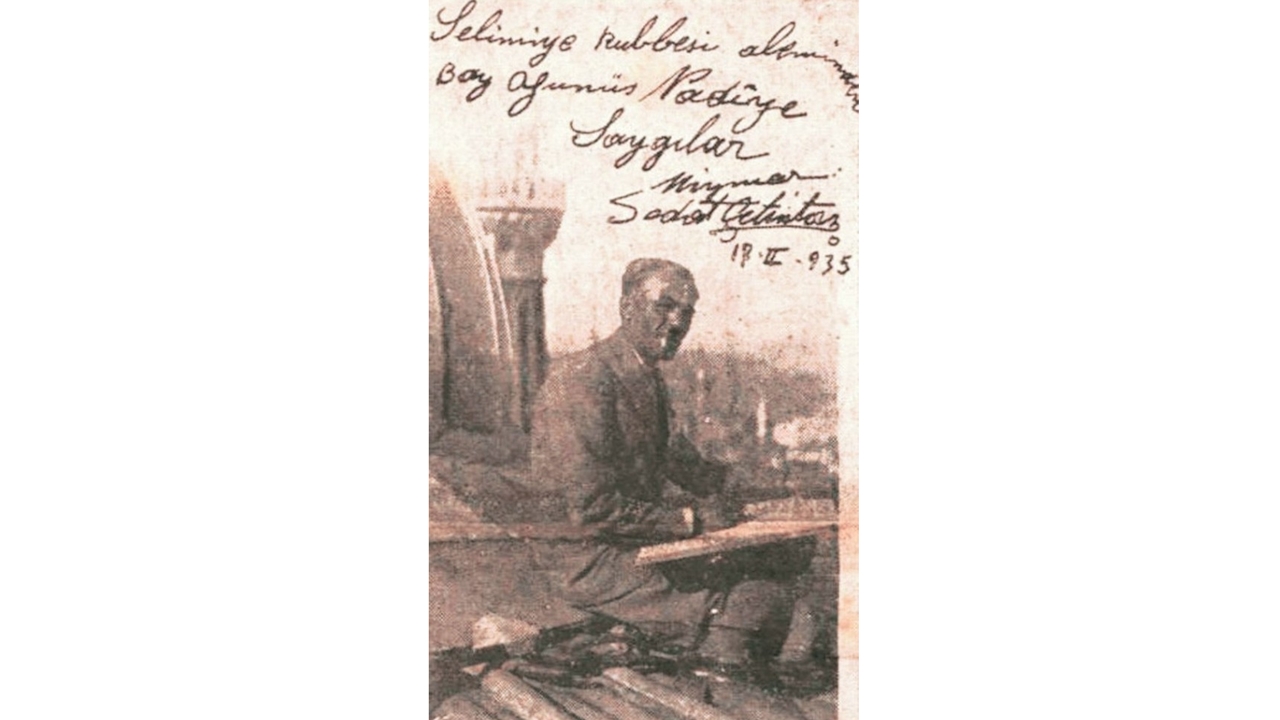
– Image: A signed photograph of the architect Sedat Çetintaş (taken in 1935 at the tomb in Süleymaniye).
There may not even be a whole skull in the middle. Architect Sedat Çetintaş, one of the officers on the board who opened the tomb of Mimar Sinan, said in a statement years later; “I entered the soil from the side of the sarcophagus, which was made entirely of cut stone, and rotted one of them and had it open. From here, I was able to stick my head along with my shoulder. The corpse is completely decomposed; In the head sample, a powdery soil had settled on him. It seems that it is rotting from the air and dampness, and there is nothing left of such corpses today in the kav part of Yeşiltepe in Bursa. Here, I was able to find a ten-centimeter piece of Sinan’s arm bones, called adut, and a piece of his skull with a diameter of three to four centimeters, and I gave them to my anthropologist friend Şevket Aziz Kansu in the presence of the administrative committee. (…)” he was saying.
According to the statements of the architect Sedat Çetintaş, published in 1963, the newspaper reports of that period were false.
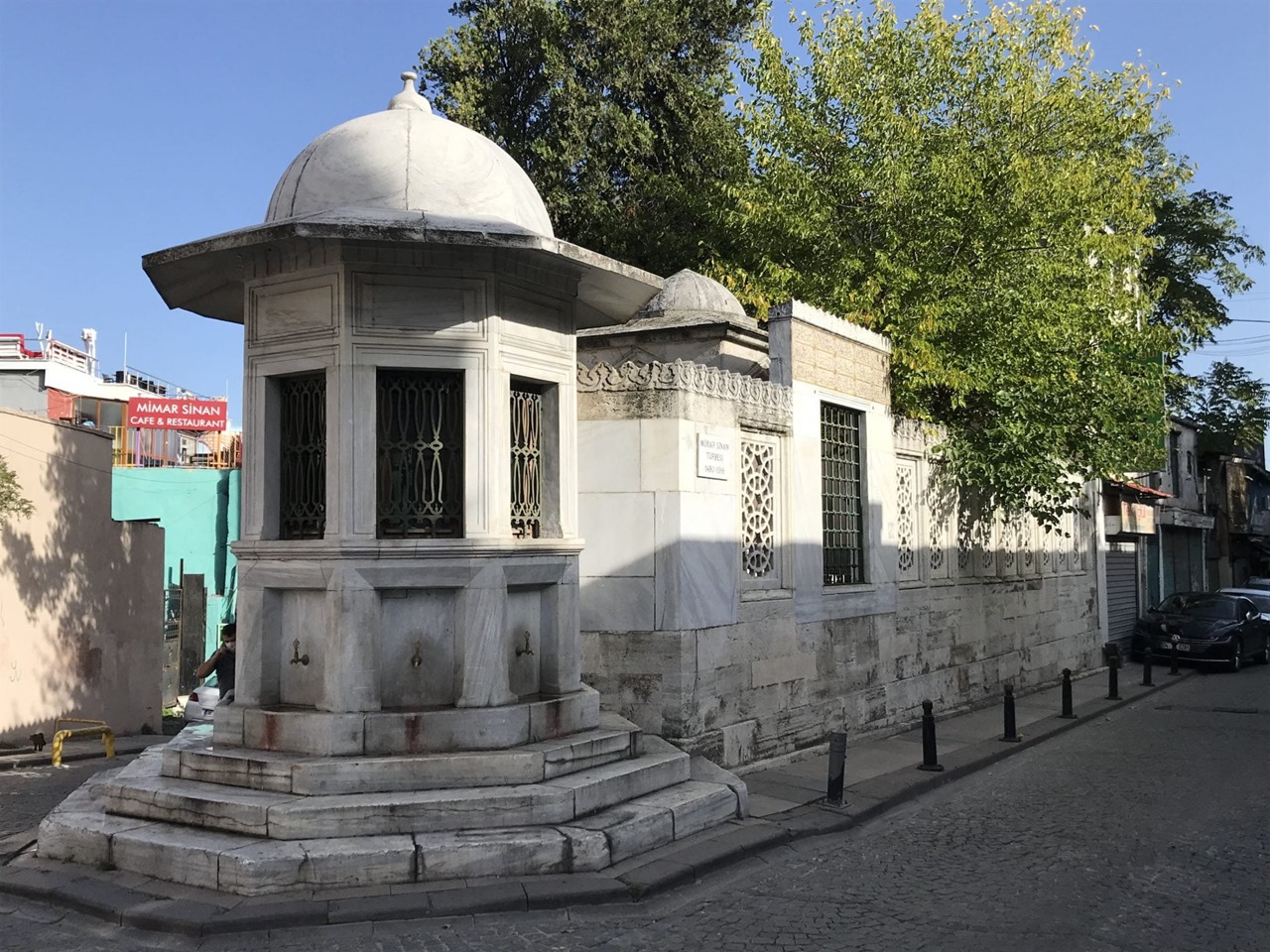
Mimar Sinan Tomb
The tomb is after all Mimar Sinan’s 347 years after his death had opened. It was perfectly logical that the skull was not intact. Even if a small piece is present, its whereabouts is still a mystery.
Probably in Ankara It is hidden in a secret cellar. In some of the newspapers dated 1935, it is stated that the skull was taken to the Turkish-Islamic Arts Museum, but there is no definite information on this subject. Some historians state that he may have been at the Faculty of Language, History and Geography at Ankara University.
Bonus: Statue of Mimar Sinan, commissioned by Mustafa Kemal Atatürk’s will
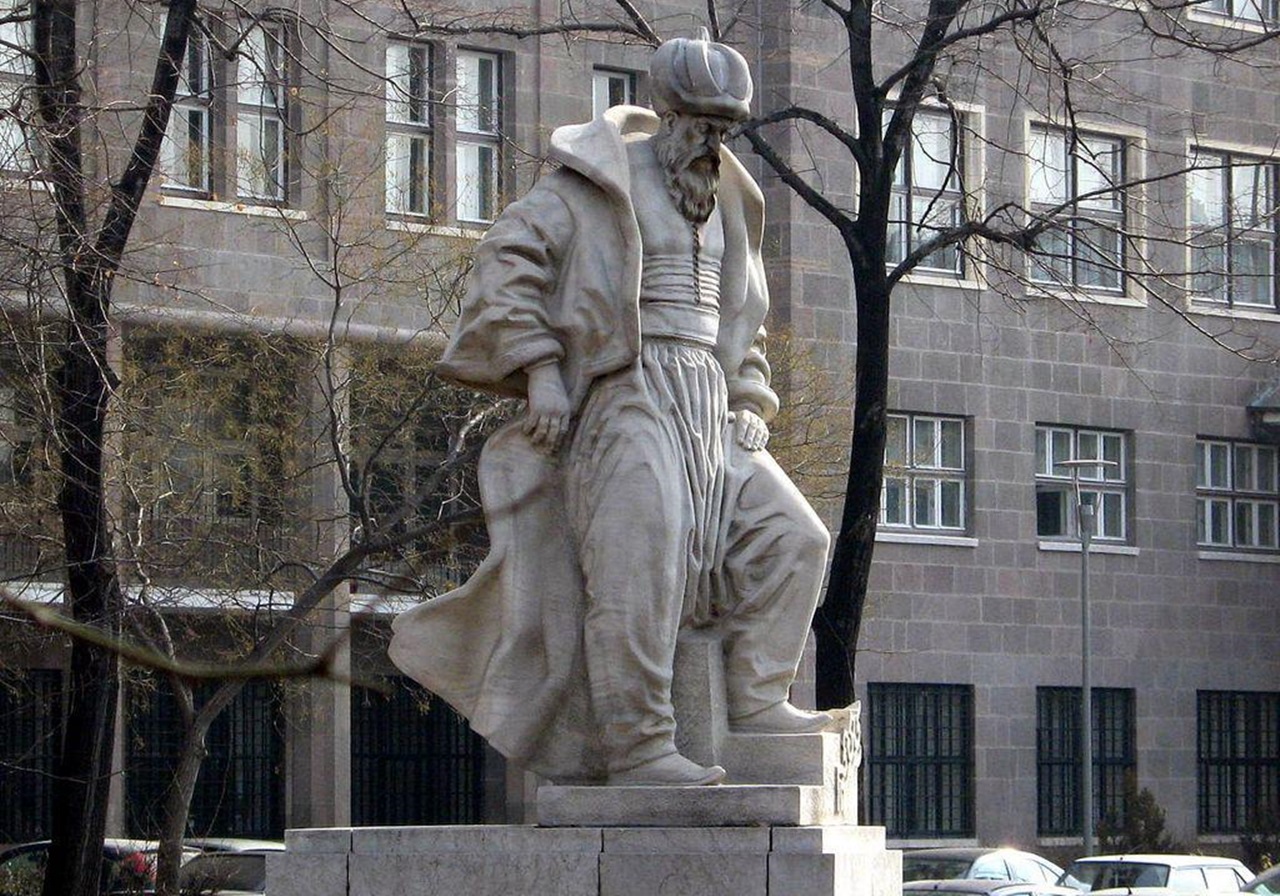
Ankara University Faculty of Language, History and Geography located in the garden.
Today, Mimar Sinan’s skull may not exist at all, but with his immortal works continues to live.
Sources: 1, 2, 3, 4, 5
RELATED NEWS
